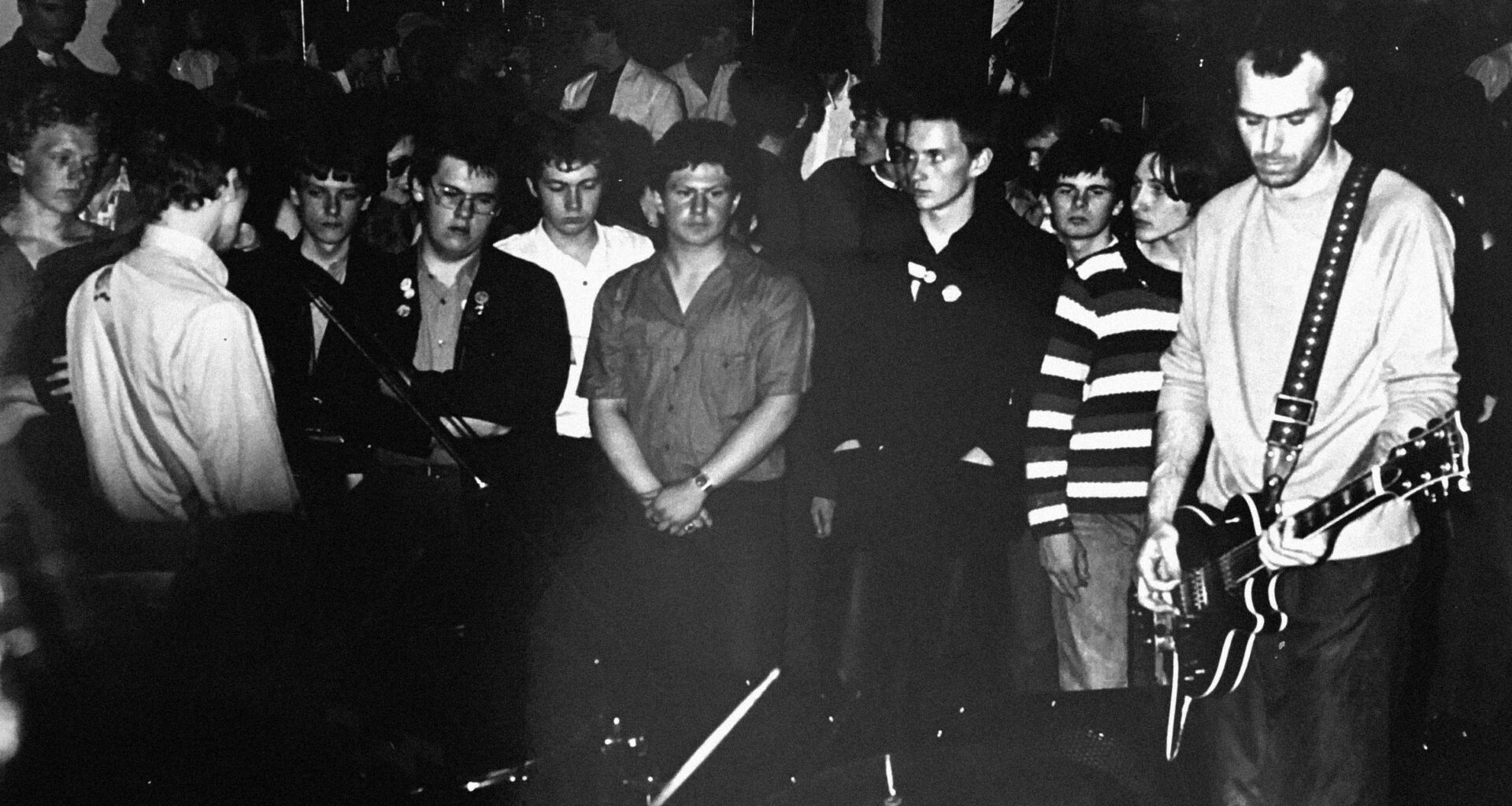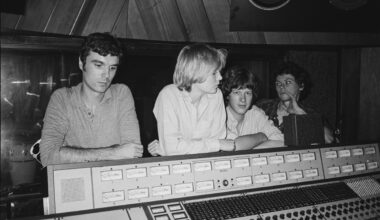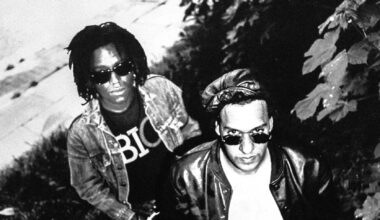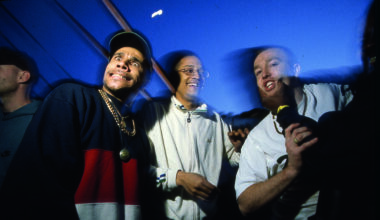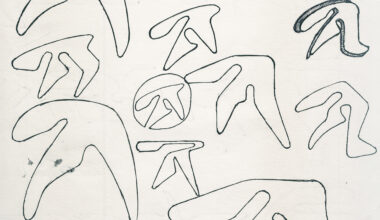Ignored and derided during their early years, Section 25 have rightfully been favourably reassessed over the intervening years. With the release of a new boxset, the band’s Vin Cassidy traces their tumultuous history…
“You had to explode the myth that you had to know how to play in a certain way, or do certain things,” says Section 25 lynchpin, Vin Cassidy, remembering how the bands of the post-punk era rebelled against the muso elitism of 1970s prog rock. “Once you get through that barrier, it’s whatever you feel like, wherever your imagination takes you.”
Among one of most musically adventurous outfits of the early 1980s, Section 25 were overshadowed by their Factory contemporaries Joy Division, A Certain Ratio and later, New Order. Yet time, occasionally, has a way of correcting these wrongs, and today they’ve a growing fan base, and their place in the post-punk pantheon, and history of electronic music, is affirmed.
Hailing from Poulton-le-Fylde, a small town near Blackpool, the trio Vin Cassidy (drums), Larry Cassidy (vocals and bass) and Paul Wiggin (guitar) drew from krautrock, gothic atmospheres, punk, the throbbing disco beat and experimental electronics to realise their singular sound.
You can hear Section 25’s eclecticism even in their early singles: on ‘Girls Don’t Count’, their 1980 debut EP produced by Ian Curtis and Joy Division manager/Factory director Rob Gretton, they ranged from the contorted, dark punk funk of ‘Knew Noise’ to the oppressive stomp of the title track to the spectral smears of guitar and sludgy bass of ‘Up To You’. All three songs suggested a band with unusual influences, capable of moulding them into something all theirs.
All of this is celebrated on a new boxset of their 1981 debut album, ‘Always Now’. Collecting
…
singles, the album itself, rarities, including live tracks from the period, across five discs of coloured vinyl, it is a sumptuous package and emphasises just how far ahead of the pack they were, while also recognising the fresh appeal they have to a streaming-savvy generation who are perhaps more attuned to the musical hybrids Section 25 specialised in.
“It ties in with the way people consume music now,” says Vin. “It’s not as tribal as it used to be, where genres of music had their own specific followers and you never strayed into another village – back then, you’d get eaten alive. Maybe people are a little more open-minded to search for things these days. The way that audiences tend to consume music is completely different now, they’ll listen to stuff from all over the place. It’s much more eclectic.”
As a teenager, Vin Cassidy was a budding drummer, whose older brother Larry was also keen to get into music.
“He went off to university and was soaking up the very early punk scene,” says Vin. “He’d come back all fired up, and into playing. He saw me as a useful ready-made ally on hand, and I was keen to play as well. He bought a Woolworths bass guitar, and the two of us cracked on.”
After finding guitarist Phil Denton, the band played their first gig in June 1978, but Denton was far too conventional in his approach, and they were soon looking for someone in tune with their unorthodox sound.
“The chap that started playing with us then, Paul Wiggin, had been a long-time school friend of my brother,” says Vin. “He had no musical experience whatsoever, but he was into giving it a go. He started playing with us and jamming at practices. It was bass and drums, my brother and I, and Paul would do these kind of atmospheric washes over the top. He wasn’t playing chord sequences or songs – he used to play backing tracks and tapes of stuff he’d found through his amp as well.”
The band name Section 25 came from a provision of the mental health act, which stated: “A patient may be admitted to a hospital, and there detained for the period allowed by this section”. Paul Wiggin had his own experience of being confined in such a way.
“Paul had been sectioned under the mental health act, and spent time at Lancaster Moor, where he had shock treatment,” says Vin. “He’d been through the mill, and there was a band in Lancaster who were doing a song called ‘Section 25’, and it was like, ‘That’s it!’.”
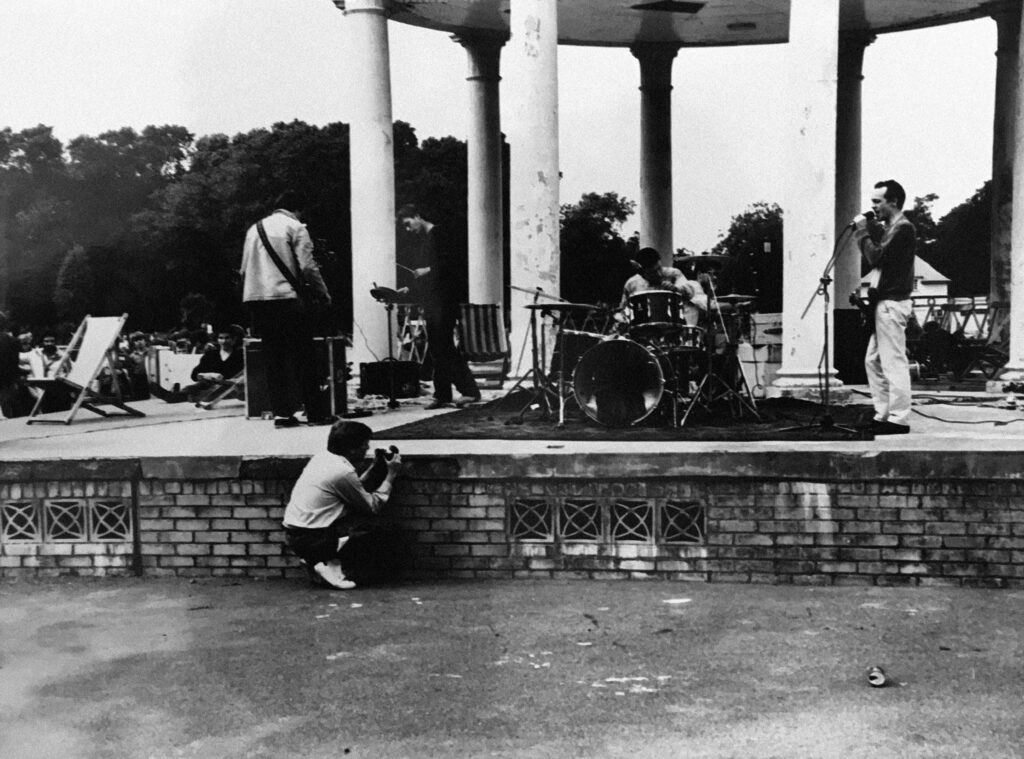
As well as punk, the trio were listening to a broad range of unusual records. Their omnivorous appetite for the strange found them enjoying everything from Karlheinz Stockhausen to Can and Throbbing Gristle. There was another influence too, beyond the musical, which seems somewhat out of step with the ethos of the punk period and may have contributed to Section 25’s off-kilter sound: that of the Buddhism, which Larry and Paul were both drawn to.
“They were quite influenced by the Buddhist scene,” says Vin. “I suppose they were hippies with short hair. They were very into a strong rhythmic pulse, something meditative. That was a thing we did live as well. It either worked really well or it didn’t, and a lot of it was very much of the moment. When it did work, it was quite intense, quite hypnotic. A group experience for the people in the audience I suppose.”
These various factors – the undulating flow of bass and drum rhythms, guitar as textural device rather than for chords or riffs, and a simultaneous love of angry noise and mind-warping psychedelia – manifested in the band’s material.
After impressing Rob Gretton with a live show in Blackpool – a charity gig at which Orchestral Manoeuvres In The Dark and Joy Division also played – they signed to Factory, putting out the ‘Girls Don’t Count’ EP in July 1980.
‘Charnel Ground’, a suitably shadowy exhumation of spine-chilling bass and frozen atmospheres that could give Bauhaus nightmares, followed quickly on sister label Factory Benelux, and Section 25 began to play more shows, though their performances were the opposite of the confrontational stance adopted by many punk and post-punk bands.
“Paul used to play guitar with his back to the audience, because he felt he’d get less scoped out by people,” says Vin. “You know, those Saturday afternoon music shop players who knew how to duplicate people’s guitar solos, who’d think, ‘You don’t know how to play, what are you fucking doing there?’.
“Larry used to turn around too, because when we started playing, especially up north, people were still spitting at bands. I, unfortunately, couldn’t turn around as a drummer, so I just used to get it full on.”
After their first few singles, Section 25 went to London to make their debut album, 1981’s ‘Always Now’, accompanied by Factory’s in-house producer and supplier of the label’s early sonic signature, Martin Hannett.
A somewhat surreal experience, it found the band recording in Pink Floyd’s custom-made Britannia Row Studios in Islington: a post-punk band in the prog rock behemoths’ lion’s den.
“Larry described it as being in an expensive studio with a cheap guitar,” says Vin. “We were quite out of our depth, but we had Martin Hannett, who wasn’t. I can remember Pink Floyd had loads of equipment knocking about. There was a bizarre mixing desk that they’d recorded ‘Ummagumma’ on, and they were getting ready to do some gigs, so down in the basement they’d got acres of speakers. Then there’s us, and we’d rocked up in a rented Transit van from Blackpool.”
Wiggin even crossed paths with one of the Floyd in a moment of downtime.
“They had a games room, and round about that time ‘Space Invaders’ had just come out. Paul was playing it one afternoon, and he looked over his shoulder, and David Gilmour’s waiting to have a go.”
The resulting record stands as one of the great albums of the period. The opener ‘Friendly Fires’ is hallucinogenic, dark, with squalls of guitar noise and a dub-influenced rhythmic drive, while ‘Dirty Disco’, with its endless forward motion, dancefloor drums and funk bass, hints at another influence on the band. The song’s lyrics suggest the escapist optimism and romance of disco, with Larry singing “I want your love / I want your body / I want your heart”, but his tone, and the music, tells another story.
“I’d soaked up the disco thing as a drummer anyway,” he says. “I was into the very physical four on the floor stuff. Larry liked that, and then we’d be adding something a bit more edgy to it. It seemed almost a bit subversive because disco, the stuff you heard at that time, was very middle-of-the-road, just about nice people having a good time. We had the idea of hijacking those rhythms and then putting a more rebellious element with it. That was quite appealing. It was just something that was in the air.”
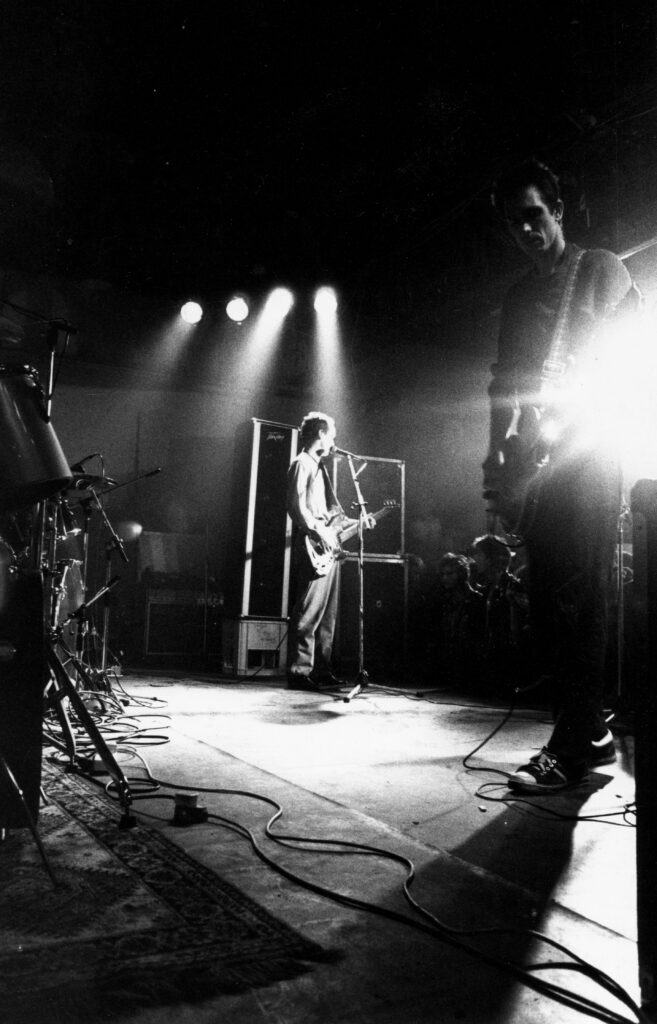
Though few others in the post-punk scene, bar perhaps Talking Heads and A Certain Ratio, were tapping into the rich rhythmic seam of funk and disco, Section 25 were singled out as copyists. Public Image Limited had made the track ‘Death Disco (Swan Lake)’, which took disco down a similarly bleak avenue, but Cassidy says at the time of recording they were yet to hear any of PiL’s twisted dancefloor excursions.
“We did get stick,” he admits. “One review said we’d pillaged PiL, but it was recorded before PiL had released anything in that vein. But because they were a massive band and we were just some northern oiks, we got labelled. We’ve been compared to all sorts over time, from Pink Floyd to Joy Division, to ACR, to PiL to whatever. I think people just say that when they’ve run out of something interesting to say. Ratio got compared to Joy Division – they cast a long shadow don’t they, especially when you’re on the same label.”
While Section 25’s contorted manipulation of disco sounds prescient these days, another track from ‘Always Now’ has taken on a strange new significance. ‘Hit’, a spooky and crepuscular highlight, was sampled by megastar rapper and mogul Kanye West for his track ‘FML’ from the 2016 album ‘The Life Of Pablo’, opening the band up to interest from an unfamiliar hip hop audience. When the request came in for sample clearance, Vin was bemused, but liked the fact the tune was re-purposing their music in a similar way that they had refashioned disco.
“It was about as out of the blue as you can get,” says Vin. “They sent a mix of how it was going to be used. In my naivety, I thought maybe they’d sampled a guitar chord or a couple of words, and actually it was the last 90 seconds of the song. It was like, ‘Fucking hell, they’ve gone to town on this one, whose idea was this? Where has this come from?’. Although our track was still at the same tempo, they’d somehow speeded it up too, and my brother’s voice had a bit of a chipmunk quality. It was weird, but we thought, ‘OK’.
“We liked to use disco beats with a different side to it, a different message, mixing things up, so it kind of appealed on that level. This was pre-Kanye in Trump’s office you’ve got to remember, so we went for it, and there was a few quid in it, obviously.
“We still don’t really know how it came about. I heard third-hand from one of the producers that he’d rocked up in the studio with our album under his arm, saying, ‘I want to use this track’.”
After the lavish studio sessions of their first album, Section 25 took another route for their follow-up, ‘The Key Of Dreams’, which was home-recorded in Blackpool and consisted of more improvisational material. Building on the sound of their first record, but with a more low-key feel, it contains gems like ‘Regions’, a barely-there, beautiful vignette of warm dubby bass, vocals and even subtle saxophone. Soon though, the band would begin to gravitate to electronic sounds and start a new iteration.
Paul Wiggin left, and the Cassidy brothers were joined by percussionist Lee Shallcross as well as Angela Flowers and Jenny Ross, who both contributed keyboards and vocals. Collecting together some essential synths and drum machines, including a Juno-6, Roland 808 and 303, they began to work on new songs, abetted by producer Bernard Sumner, who was, of course, already well-versed in machine beats.
“We’d organised a gig with New Order in Blackpool, around the time they’d done ‘Temptation’, it was a well-attended, good show,” says Vin. “We made a few quid out of that, and we managed to buy the equipment we needed. That summer we just spent a lot of time experimenting and finding out how to use this stuff.”
From these sessions came the electronically driven album ‘From The Hip’, and most significantly, the track ‘Looking From A Hilltop’. The latter was the band’s most popular single, a dancefloor hit on both sides of the Atlantic that has the distinction, along with the earliest Chicago house and Chris & Cosey’s ‘Dancing Ghosts’, of being one of the first records to use the TB-303 synth for its alien bass frequencies.
There was another album, ‘Love & Hate’, but Vin left halfway through the recording. Reforming in 2001, a new long-player was postponed indefinitely following the death of Jenny Ross. They made two further albums, but Larry Cassidy himself died in 2010 prior to the ‘Retrofit’ collection being released. Ahead of the new boxset, it seems that Vin and Paul Wiggin have been in touch again.
“The boxset has been nice in a way, because it’s kick-started me getting in touch with Paul,” says Vin.
As to the group’s legacy, Vin simply wants people to be able to appreciate their contributions to music, in contrast to how they were derided by the music press in the early days.
“Hopefully people will have a good opinion of the band and what we’ve done over time,” he concludes. “I did that thing years ago of trying to make a living out of it and being a professional musician. I preferred it when I was a kid at 16 years old playing along with my older brother’s records. If I can capture a little bit of that, then I’m happy.”
‘Always Now (Boxset Edition)’ is out on Factory Benelux
